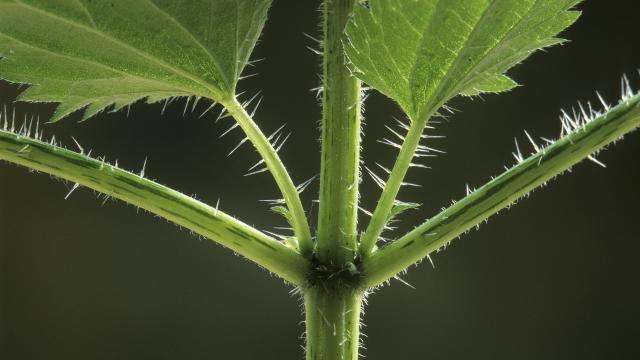One of the best parts about spring is finally getting back outside to enjoy nature. Or, at least that’s the case until you run into some sort of obstacle, like an especially muddy trail, seasonal allergies, or ending up with a red, itchy rash after coming in contact with poison ivy, or a similarly irritating plant.
That’s right: In addition to avoiding the three-leaved weed, there are other plants that can leave you scratching. Here are some found both in the wild and in gardens that you’ll want to avoid (or at least be extra cautious around).
What to know about the itchy rash
The tricky part is that it doesn’t take much for these plants to irritate your skin: In many cases, simply brushing up against them while walking is enough to cause a rash. Broadly speaking, that skin irritation is called “contact dermatitis,” and it happens when your skin has an allergic reaction to a substance.
Typically, a rash will develop within minutes or hours of exposure, and depending on its severity, can last up to a month.
According to the Mayo Clinic, in addition to a red, itchy rash, other signs and symptoms of contact dermatitis can include:
- Dry, cracked, scaly skin
- Bumps and blisters, sometimes with oozing and crusting
- Swelling, burning or tenderness
Plants that can cause itchy rashes
When it comes to plants that cause rashes and skin irritation, you’re probably familiar with the Big 3: Poison ivy, poison oak, and poison sumac. But there are plenty of others that can leave you feeling itchy and uncomfortable.
Wild plants
Here are a few examples of plants like the Big 3 that cause contact dermatitis and can (and do) grow wild all over the United States — from wooded areas, to roadsides, to backyards:
- Spotted water hemlock
- Wood nettle
- Stinging nettle
- Leadwort (also known as plumbago)
- Ragweed
- Giant hogweed
Garden plants
And it’s not only wild plants that can cause skin irritation. According to the American Academy of Dermatology Association (AADA), these homegrown crops have been known to cause skin reactions:
- Strawberry
- Garlic
- Tomato
- Comfrey
- Borage
- Rose hips
- Baby’s breath (when dried)
- Hot peppers
- Tulip bulbs
- Daffodil bulbs
- Hyacinth bulbs
If you’re unsure whether a plant you’ve come across in the wild or have grown yourself in your garden may cause a rash, it’s best to proceed with caution, covering up any exposed skin (especially on your arms and legs) and wearing gardening gloves.
And if you think you’ve come in contact with one of these plants, wash your hands and the body part with water immediately and thoroughly (although the AADA says to avoid soap and harsh scrubbing).

Leave a Reply
You must be logged in to post a comment.